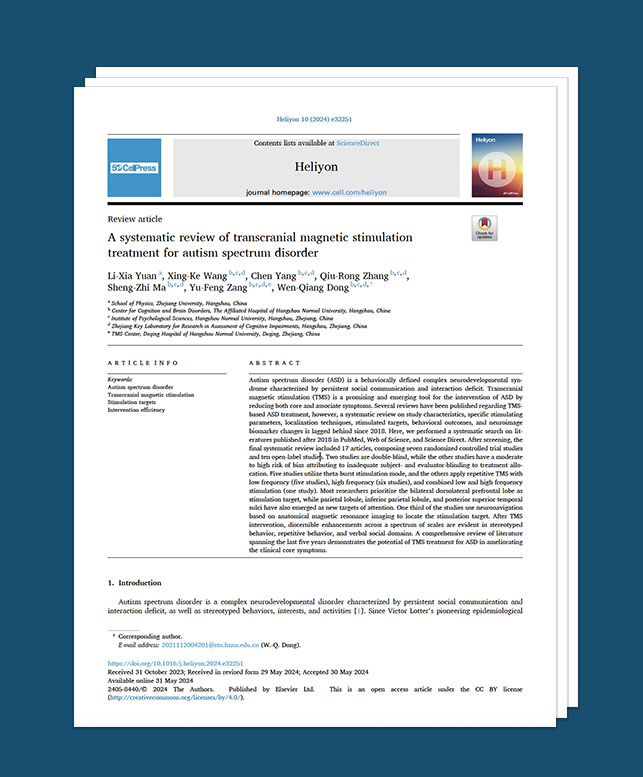
New Scientific Review Shows Positive Results from TMS Treatment for Autism

After TMS intervention, discernible enhancements across a spectrum of scales are evident in stereotyped behavior, repetitive behavior, and verbal social domains. A comprehensive review of literature spanning the last five years demonstrates the potential of TMS treatment for ASD in ameliorating the clinical core symptoms.”
This conclusion comes from a new systematic review of TMS (transcranial magnetic stimulation) treatment for autism spectrum disorder (ASD), published in April 2024. It is the first review of its kind in five years.
TMS is a key component of our MeRT treatment for autism, so this review offers some excellent information on the positive results of this treatment.
While you can read the full review below, we have also summarized the key points so you can get more information on this page.
Key Points From This Comprehensive Review
- Autism Spectrum Disorder (ASD) is a complex neurodevelopmental condition marked by difficulties in social communication, interaction, and repetitive behaviors. Standard treatments, including behavioral therapies and medications, can be expensive, time-consuming, and may not effectively address core symptoms.
- Transcranial Magnetic Stimulation (TMS) can modify brain activity by altering the brain’s electrical and chemical functions. This novel approach to managing ASD symptoms is safe and well-tolerated, even for children.
- The review examined studies published between 2018 and 2023, analyzing study characteristics, TMS parameters, stimulation targets, behavioral outcomes, and neuroimaging changes.
- Seventeen studies were reviewed, encompassing both randomized controlled trials (RCTs) and open-label studies. An open-label study is one in which researchers and participants are both aware of the treatment being administered.
- TMS treatment frequencies ranged from once to five times per week, with intervention durations spanning from 1 to 18 weeks. The two primary TMS modes employed were repetitive TMS (rTMS) and intermittent Theta Burst Stimulation (iTBS). We use rTMS in our MeRT treatment.
- Observed improvements included stereotyped behaviors, repetitive behaviors, and social communication skills, measured using various scales and assessments.

- Several studies noted changes in brain activity and connectivity following TMS treatment. These changes suggest TMS can influence specific measurable indicators (biomarkers) detected in brain imaging scans linked to ASD.
- The review highlighted that using EEG guidance enhanced the precision of targeting brain regions associated with ASD symptoms. This is significant because our MeRT treatment involves EEG-guided TMS, making it more effective than standard TMS treatments.
- The review concluded that “TMS has positive effects on stereotypical behavior, repetitive behavior, verbal and social aspects of ASD, leading to overall improvement across all scale scores post-intervention.”
